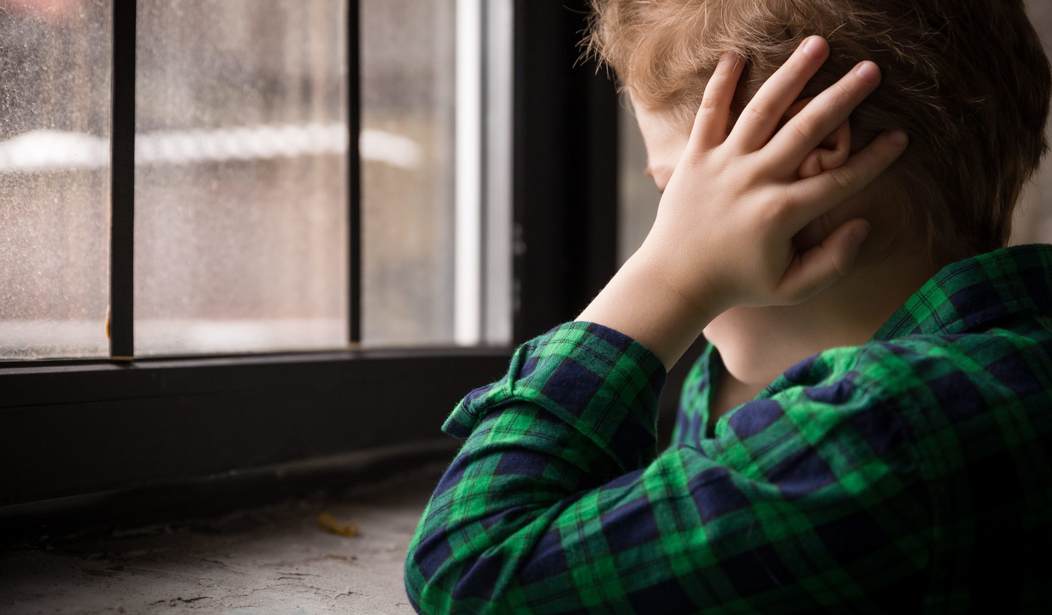Some recent studies suggest a connection between autism and gender dysphoria. But an autistic Catholic writer warned against rushing to conclusions, suggesting the transgender movement is targeting children with disabilities as a way to expand its ranks.
“To help and protect individuals on the spectrum, there needs to be greater awareness of transgenderism’s lies and why those on the spectrum could be susceptible to its manipulation,” wrote Crisis Magazine‘s Elise Ehrhard, a Roman Catholic writer who herself has been diagnosed with autism. “Encouraging sex-change or an alternate gender identity is destructive to individuals with autism or Asperger’s … only furthering their private pain.”
Ehrhard told the painful story of Dr. Kathleen Levinstein, a professor of social work at the University of Michigan, whose daughter became convinced she was really a man trapped in a woman’s body. Transgender activists with Parents, Families and Friends of Lesbians and Gays (PFLAG) pressured her to take sex-altering hormones and cut off her breasts. Only after it was too late did Levinstein realize the irreversible mutilation of her daughter’s body. The hormones also did not bring peace, but rather further psychological confusion.
“She has been taken advantage of. Healthy organs were amputated,” Levinstein wrote of her daughter. “It is a crime not just against women, but particularly against disabled women. So many of these young women who are ‘transitioning’ are also autistic.”
But it isn’t just Levinstein’s daughter — a recent article in The Atlantic pushed the idea that “transitioning” is healthy, and even a necessity for those on the autism spectrum who seem to want it. The Atlantic‘s Bryony White argued that seeing a desire to transition as a result of autism is wrong, and “appears to be limiting access to medical care,” as in sex-change hormones and surgery.
Ehrhard had a different conclusion, however, and she backed it up with the real-life experience of being autistic herself.
Why would those who are neurobiologically different also come to see themselves as a different biological sex with the rising influence of the transgender movement? Neurologically atypical individuals spend much of their childhood and adolescence quietly struggling with how other misunderstand them and how they understand themselves. It is critical to understand this struggle in order to push back against the encroachment of transgender ideology into the gifted and special needs community.
Children who struggle with neurological disabilities like autism and Asperger’s have trouble connecting with fellow children. In some cases, this can lead them to seem transgender when they really aren’t, Ehrhard explained.
Next Page: How Ehrhard’s personal struggle with Asperger’s helped her see through transgender lies.
The social struggle “may be more outwardly noticeable” with boys, which is why it seems more boys are autistic than girls. “With young girls, the struggle is often more hidden (and undiagnosed),” Ehrhard argued. “I can offer some insight into this struggle through my own childhood experience as an undiagnosed girl with Asperger’s.”
She recalled engaging in the activity called “stimming.” She flapped her hands, opened her mouth, and allowed her voice to sound like she was out-of-breath. “I loved stimming and still do,” the author admitted. “It felt relaxing: a kind of natural, harmless high in the brain that others around me would never know and could not attain. Nonetheless, I learned at a young age to only stimmy in private so as to avoid ridicule.”
Ehrhard argued that young girls are better at “faking it” until adolescence, when social expectations increase.
“Asperger’s girls growing up often prefer the company of boys and generally find it far easier to relate with males,” she noted. She quoted psychiatrist Martin L. Kutscher, who wrote that “many women who have Asperger’s syndrome have described to psychologists and in autobiographies how they sometimes think they have a male rather than a female brain, having a greater understanding and appreciation of the interests, thinking, and humor of boys during their early school years.”
What does that sound like? Oh yeah, transgenderism. But they beat this current movement to the punch. “This aspect of their cerebral wiring—the conflict between what they feel, how they perceive the world and how the world perceives them—existed long before the neo-Gnosticism of transgender ideology came into vogue,” Ehrhard quipped.
Were kids with Asperger’s transgender before transgenderism? Or maybe is this an area of psychology that modern science does not yet understand? And no one understands worse than teenagers.
“Due to their unusual traits, [girls with Asperger’s] are also prime targets for bullying by ‘mean girls’ during adolescence, further alienating them. I can attest to that from personal experience having ended up with a concussion and blood streaming down my face in middle school,” Ehrhard recalled.
“These girls are not ‘boys trapped in a girl’s body.’ These are girls who think differently and are often misunderstood by the other young girls around them,” the Asperger’s writer emphatically declared. “They don’t need to be encouraged to become males. Others need to be encouraged to better understand them as unique women.”
This is not coming from a removed, critical conservative with no experience, but a woman who painfully lived through these struggles.
While Ehrhard could not know the same thing about boys, she had a very good theory on them, too. “Sensory-seeking little boys may like to touch the ruffles, tutus or lace on girls’ clothes for comfort,” she explained. “They often have delayed gross motor skills, making it difficult for them to engage in the contact sports through which boys generally bond.”
Autistic boys “who toe-walk due to problems with their vestibular system may be mocked for ‘walking like a girl’ or ‘acting girly.’ Boys on the spectrum are routinely bullied or rejected by other boys, leading them to question their very identity as boys.”
Next Page: Why considering autistic kids transgender is remarkably shallow, and what parents need to learn about it.
Explained this way, the knee-jerk “affirming” reaction of transgender activists that such boys are really “girls trapped in a boy’s body” seems remarkably shallow. LGBT activists rush to put these people into a box. They may speak about “gender diversity,” but they want to transform these poor children into political allies, regardless of the long-term physical and psychological consequences.
Parents, especially, need to see through these tactics. Ehrhard noted that “some mothers of Aspies now refer to their sons as ‘male-assigned’ rather than boys.”
“These parents do not need to be told to accept that their child is really a ‘male trapped in a woman’s body’ or ‘a woman trapped in a man’s body.'” Rather, “they need to be further educated on special needs and taught ways to relate to their quirky and gifted son or daughter with Asperger’s.”
Transgender ideology is not the way to understand and help these kids. Instead, it just replaces one misunderstanding with another. When the LGBT movement reaches out to these people as “transgender,” it can do them extreme harm.
“For a pseudo-religious movement to target this vulnerable population of youths for their own ideological ends is nothing less than child abuse,” Ehrhard concluded. It is essential to counter transgender ideology, for otherwise “young people with special needs will just be the latest victims in the left-wing cultural assault against human biology.”
For some, like Levinstein’s daughter, it is already too late. Surgical alteration and removal of healthy organs is not “health care,” and it is especially damning to push it on those who are already disabled. It may sound caring to “affirm” these children’s (likely temporary) gender confusion, but Ehrhard calls it what it is in reality — child abuse.









Join the conversation as a VIP Member